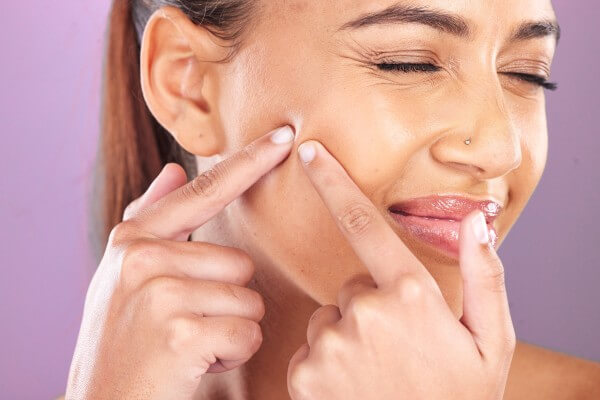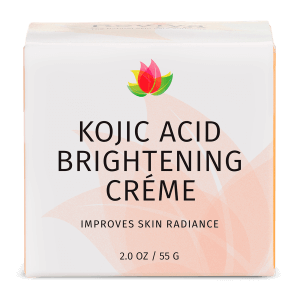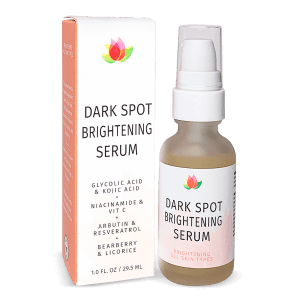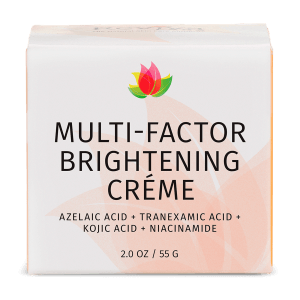Ingredients, Reviva Labs, Skin Care
Why Kojic Acid is a Game-Changer for Dark Spots
Skin discoloration isn’t just a cosmetic issue – it can feel like an unfair reminder of past sun exposure, breakouts, or even hormonal shifts. Whether you’re dealing with melasma, post-inflammatory hyperpigmentation, or plain old sunspots, the struggle to achieve a clearer, more even-toned complexion is real. That’s where kojic acid comes in – not as a trendy new fad, but as a time-tested, dermatologist-trusted ingredient that works hard to fade dark spots while being gentler than many of its counterparts.
While hydroquinone has long been considered the gold standard for fading pigmentation, kojic acid offers a powerful alternative that doesn’t come with the same baggage. And that’s part of why it’s becoming a staple in brightening skincare regimens across the board.
Let’s explore why kojic acid has earned its reputation as a brightening powerhouse – and why your routine might not be complete without it.
The Origins of Kojic Acid and Why That Matters
Kojic acid is a natural byproduct of fermentation, most commonly derived from rice or the fungi Aspergillus oryzae during the sake brewing process. In fact, it was first discovered in Japan in 1907. That origin isn’t just a fun piece of trivia – it also informs how kojic acid interacts with the skin. Unlike synthetic bleaching agents, kojic acid works in a more selective and gentle manner, interfering with the production of melanin without destroying cells.
Melanin, the pigment responsible for skin color, becomes overactive in areas of inflammation, injury, or excessive UV exposure. Kojic acid works by inhibiting tyrosinase, an enzyme critical for melanin synthesis. The result: over time, your skin produces less pigment in those stubborn dark patches.
What makes it truly valuable is that it doesn’t just stop discoloration in its tracks – it helps reverse it gradually, making it particularly effective for skin that’s been dealing with long-term pigmentation issues.
A Better Brightener for Sensitive Skin
People with sensitive skin are often wary of anything labeled “brightening.” That’s understandable. Traditional brighteners, particularly hydroquinone, can cause irritation, redness, and even rebound hyperpigmentation if overused. Kojic acid offers a safer path forward.
In many studies, kojic acid has been shown to deliver visible improvements in dark spot reduction with significantly fewer side effects. While some people may still experience mild irritation – especially at higher concentrations or in combination with exfoliating acids – it’s generally far better tolerated than aggressive alternatives.
This makes it a great option for those with rosacea, post-inflammatory hyperpigmentation from acne, or even darker skin tones, where hyperpigmentation treatments can sometimes backfire and cause further darkening.

The Synergy of Kojic Acid with Other Ingredients
One reason kojic acid performs so well is its versatility. It pairs beautifully with other brightening agents to offer a multi-pronged attack on pigmentation without harshness. When included alongside niacinamide, glycolic acid, arbutin, vitamin C, or licorice root extract, the results can be amplified.
For example, a formula that combines kojic acid with glycolic acid can help accelerate cell turnover, allowing the brightening action to work faster and more efficiently. Add in niacinamide, and you’ve got an ingredient that helps strengthen the skin barrier while calming inflammation – a major bonus when treating pigment-prone skin.
Some formulas even include antioxidants like resveratrol or green tea extract to protect against oxidative stress, one of the lesser-known triggers of stubborn discoloration.
The Results Don’t Lie
A double-blind clinical study published in the Journal of Cosmetic Dermatology found that kojic acid, when used consistently for just 8 to 12 weeks, produced measurable improvements in skin clarity and pigmentation without significant irritation. In this study, participants who used kojic acid saw statistically significant reductions in melanin concentration in their dark spots, compared to those using a placebo.
What’s more, these changes weren’t fleeting. Continued use maintained the improvements, suggesting kojic acid works not only to correct but to help prevent future pigmentation.
And it’s not just lab coats and peer-reviewed journals that stand behind it. Skincare professionals – including dermatologists and estheticians – routinely recommend kojic acid to clients with persistent hyperpigmentation, especially when hydroquinone is off the table.
Two Smart Ways to Use Kojic Acid in Your Routine
You don’t need an entire shelf of products to see the benefits of kojic acid – just one or two targeted treatments used consistently.
Reviva Labs offers two standout products that incorporate kojic acid without overloading your skin. The Kojic Acid Brightening Crème is a nourishing, daily-use cream that combines kojic acid with olive squalane, glycerin, and cellulose gum to ensure hydration while reducing the look of dark spots. It’s designed to be used day and night, and it’s gentle enough for most skin types.
Another option is the Dark Spot Brightening Serum, which blends kojic acid with glycolic acid, niacinamide, arbutin, and plant-based antioxidants like resveratrol, licorice root, and bearberry. This serum’s multi-ingredient formula supports a layered approach to fading discoloration and visibly evening skin tone. It’s a good choice for people who want an all-in-one spot corrector that also helps defend against future damage.
You’ll still want to pair any kojic acid product with a reliable SPF during the day. Not just because the ingredient can make skin more sun-sensitive, but because sun exposure is the number one reason dark spots linger or reappear.
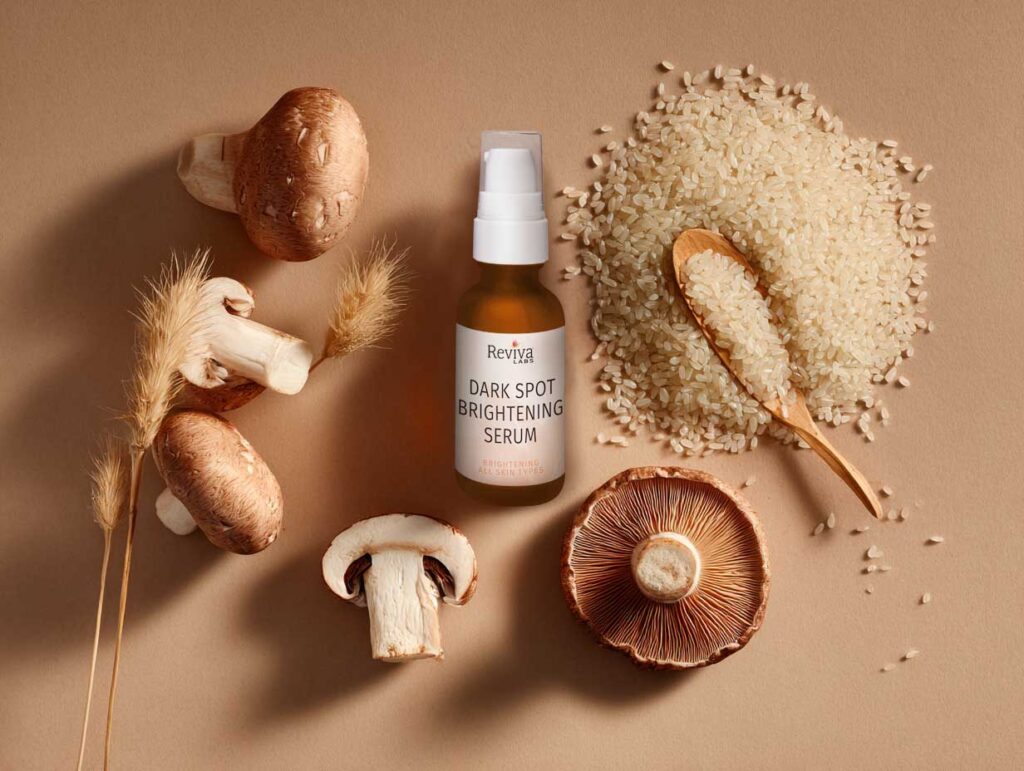
How Long Does Kojic Acid Take to Work?
That depends on your skin type, how dark the spots are, and the concentration of kojic acid in your product. But generally, most people begin seeing noticeable improvements after 4 to 6 weeks of consistent use. Deeper pigmentation may take up to 12 weeks or more to fade, particularly if sun protection isn’t part of your routine.
One of the most common mistakes with kojic acid is giving up too soon. Because it works gradually – unlike exfoliants or retinoids, which can produce visible flaking – users sometimes underestimate its effectiveness. But with patience, kojic acid delivers results that are real and lasting.
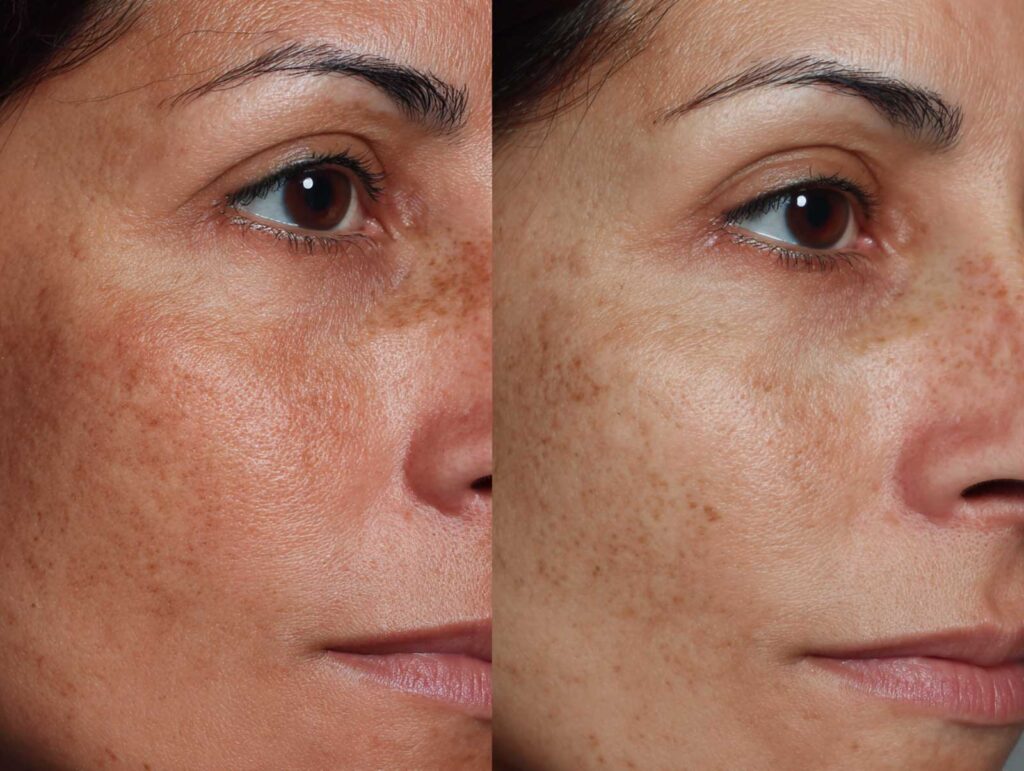
Addressing Common Concerns About Kojic Acid
Some people wonder whether kojic acid is safe for long-term use. When used at standard topical concentrations (typically 1 to 4%), kojic acid has shown no evidence of systemic toxicity or carcinogenicity. In fact, it is still widely used in medical-grade products across Asia and Europe.
There is a very low risk of contact dermatitis, especially in people with sensitive skin. That’s why patch testing any new product is always a good idea, regardless of the ingredient.
Another question often raised is whether kojic acid can lighten your natural skin tone. The answer is no. Kojic acid does not bleach or alter the natural melanin in unaffected areas – it simply helps to normalize overproduction in darkened patches. The goal is not to whiten the skin, but to restore a more even appearance.
Is Kojic Acid Better Than Other Brightening Ingredients?
Not necessarily better – but uniquely useful. Vitamin C, niacinamide, and alpha arbutin are all excellent brightening agents, each with slightly different mechanisms. What makes kojic acid special is its ability to inhibit tyrosinase while still being relatively gentle.
It also works particularly well when paired with other brighteners, offering synergy without stacking irritation. For people who have tried vitamin C with little to no effect on their spots, kojic acid can be the missing link.
It’s also stable in cream-based formulas, meaning it maintains its efficacy longer than some water-based vitamin C products, which are notoriously unstable.
Making Kojic Acid Work for You
If you’re ready to try kojic acid, start slow. Look for products with clear labeling and concentrations around 1%, especially if your skin is prone to dryness or sensitivity. Apply once daily for the first week, then increase to twice daily if your skin tolerates it well.
Avoid pairing it with strong actives like retinol or benzoyl peroxide in the same routine unless directed by a professional, as that can increase irritation risk. Instead, alternate nights or apply one in the morning and the other in the evening.
And again, sunscreen isn’t optional – it’s essential. You don’t want all your progress undone by an afternoon walk without protection.

Why It Deserves a Spot in Your Routine
The beauty of kojic acid lies in its balance – powerful enough to address deep-seated pigmentation, yet gentle enough for regular use. Whether you’re tackling melasma, sunspots, or stubborn post-acne marks, kojic acid offers a solution backed by research and decades of global use.
It’s not about perfect skin. It’s about helping your skin reflect your health and care, not the mistakes of the past or the marks left behind by hormones, stress, or inflammation.
If you’ve been searching for a brightening agent that works without the risks, kojic acid might just be the change your routine needs.
While both Reviva Labs' Kojic Acid Brightening Crème and Multi-Factor Brightening Crème are designed to improve skin tone and reduce the appearance of discoloration, they serve slightly different needs and skin types. Here’s how to decide between them:
Choose the Kojic Acid Brightening Crème if:
You're focused on fading visible dark spots with a gentle, single-brightener formula. This crème features kojic acid as the key active, supported by moisturizing ingredients like olive squalane and caprylic/capric triglycerides. It’s well-suited for people with sensitive skin, or those who want a nourishing, low-irritation formula to spot-treat or maintain progress after more intensive treatments.
Best for:
- Specific sun spots, post-acne marks, or age-related discoloration
- Dry or sensitive skin types
- A low-maintenance brightener that’s easy to layer with other products
Choose the Multi-Factor Brightening Crème if:
You want a more advanced, multi-targeted formula to correct uneven skin tone and persistent discoloration. It features azelaic acid, niacinamide, tranexamic acid, and kojic acid—a quartet of clinically supported actives that address pigmentation from multiple angles: melanin overproduction, inflammation, and barrier dysfunction. The inclusion of HEPES (a pH-buffering acid) and hydroxyethyl urea adds mild exfoliating and hydrating benefits, making this formula ideal for people who need results across larger areas of the face.
Best for:
- Diffuse uneven tone or stubborn pigmentation
- Melasma or hormonally triggered discoloration
- Those ready for a performance-forward formula that layers well with serums
In summary:
Kojic Acid Brightening Crème is your go-to for gentle spot targeting with a straightforward formula.
Multi-Factor Brightening Crème is your daily solution for broader skin tone correction using a more sophisticated combination of actives.
They don’t serve the same role - and that’s the point. Your skin needs options, and now you know exactly when to choose each.

